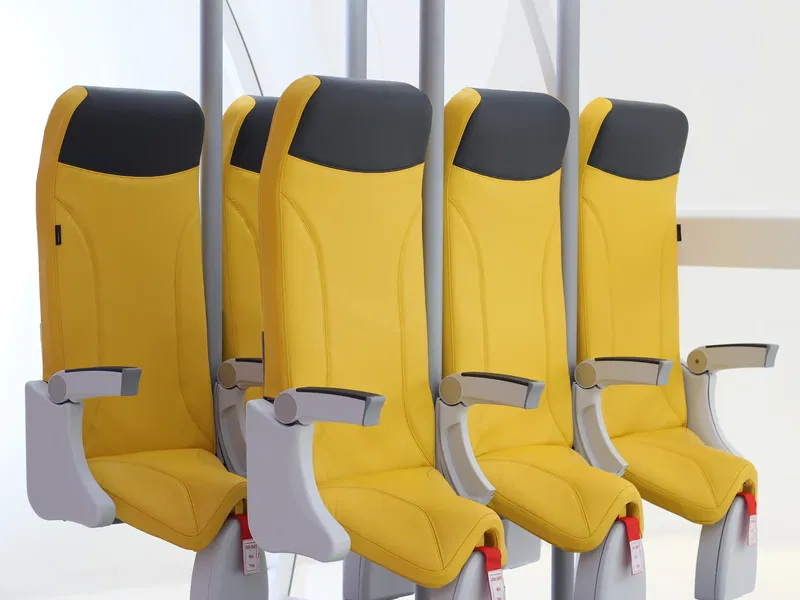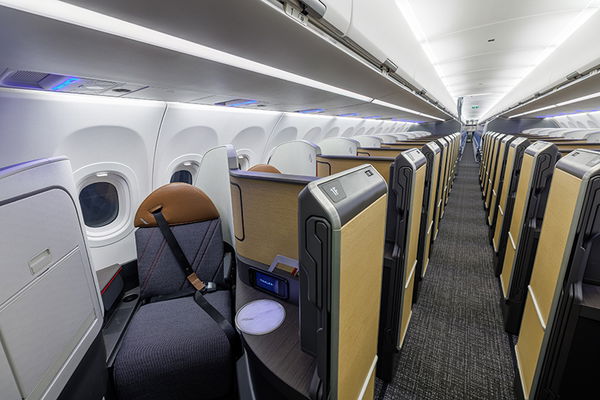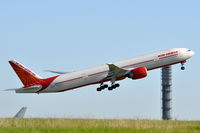Thankfully, Standing Seats On Airplanes Not Coming Anytime Soon

Featured image: Aviointeriors
In 2012, Italian aircraft seat manufacturer Aviointeriors showcased a rather controversial standing-seat concept that could potentially increase passenger capacity by up to 20%.
The “SkyRider” concept is quite similar to those on some roller coasters where you’re saddled to the seat, in an almost standing position. With seat pitch reduced to just 23 inches, carriers could potentially gain up to 20% additional space, making it cheaper for passengers to fly.
The standing seat were later revised, with versions 2.0 and 3.0 being featured at a number of aircraft interior exhibitions over the years since to concept with introduced to the public.
Since then, tabloids continually report on these seats as if they are a new product, with the latest suggesting a 2026 introduction via a number of European carriers.
The thing with airplane seats is that they must go through rigorous testing, and be approved by various civil aviation and safety boards before they can be used on commercial flights. Just ask Lufthansa about the disastrous implementation of their Allegris business and first-class seats.
Aviointerior’s standing seats garnered so much attention that the company issued a statement via their social media channels, dispelling the rumors of a potential 2026 introduction.
“Once again, the image of the Skyrider is making the rounds online, stirring up debate and curiosity. As it has in past years, this unconventional airplane seat design has become a hot topic, but Aviointeriors want to step in to set the record straight.
“The Skyrider, often mistaken for a finalized airline seat ready for takeoff, is in fact a conceptual prototype dating back to 2012. Designed as a bold response to one of the aviation industry’s most pressing challenges, while maximizing space and ergonomics it was never meant to be taken at face value. Rather, it was a provocative exercise in design innovation, challenging the limits of what air travel might one day look like.
“Aviointeriors is well aware of today’s market demands, bringing together quality, comfort, and the unmistakable touch of Made in Italy in every product it creates. For now, the Skyrider is not part of the official lineup.”
The European Union Aviation Safety Agency (EASA) also confirmed the same, saying that they were not in receipt of any vertical or semi-standing style seating design for review. In an interview with BirminghamLive, the agency said they have “yet to have any applications for such an approach, nor have we seen any practical use cases because the design of the fuselage does not provide space for standing passengers right across to the window.”
Why standing seats won’t see the light of day
Looking at the SkyRider concept, each row of seats is supported by two poles that connect to the aircraft fuselage, both at the top and bottom. Today’s aircraft are not able to facilitate this as it means stripping away sections of the overhead bins and installing support rails capable of withstanding horizontal forces up to 16 Gs.
Airlines would then have to ask themselves a number of other questions. Will they still be able to evacuate all passengers under 90 seconds? Where would passengers store their personal items? Would they require additional crew members to cover the additional passengers?
Realistically, trying to implement seats like are not worth the time and effort, and trying to reconfigure aircraft to meet today’s safety standards would end up costing more than the potential savings gained from implementing standing seats.
Does this mean we will never see standing seats? Maybe not, but it will require collaboration between multiple stakeholders in the industry. With the shift back to premium travel, airlines definitely won’t be considering this concept any time soon.



